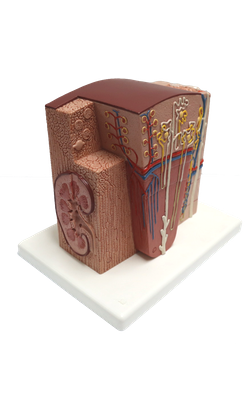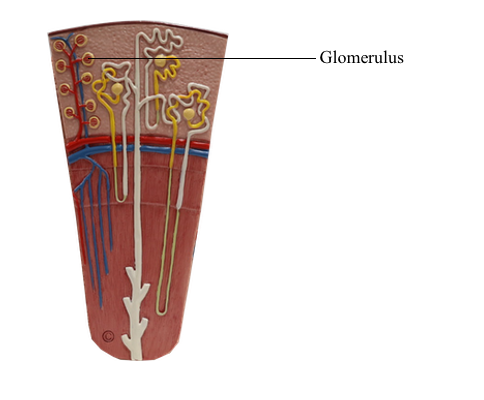Main Model

Zone C : Glomerulus

The renal corpuscle, also known as a Malpighian corpuscle, is the
essential portion of the nephron. It consists of a renal glomerulus and Bowman's capsule.
The corpuscle has two poles: the vascular pole and urinary pole. At the
vascular pole, the afferent arteriole (which supplies the capillary
network of the glomerulus) enters, and the efferent arteriole (which
collects the blood from the capillaries) leaves the corpuscle. The
urinary pole is the beginning of the proximal convoluted tubule; it is
continuous with Bowman's space.
The renal glomerulus is composed of a cluster of capillaries. After entering the corpuscle from the vascular pole, the afferent arteriole immediately branches into numerous capillaries that anastomose with one another and form a complicated capillary network. All capillaries eventually converge to form the efferent arteriole. The glomerulus is suspended in Bowman's capsule by means of the vascular pole. The endothelial cells of the capillary are fenestrated, rest on a thin basement membrane, and are externally surrounded by a layer of pedicels of the podocytes that constitute the visceral lining of Bowman's capsule. These three layers are called the glomerular filtration barrier, through which the filtrate first enters Bowman's space from the blood circulation. The capillary loops are supported by stalks of special connective tissue containing extraglomerular mesangial cells at the vascular pole. This cell type (mesangial cells) may also be found between the capillaries within the glomerulus.